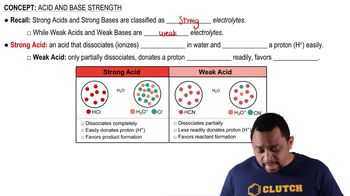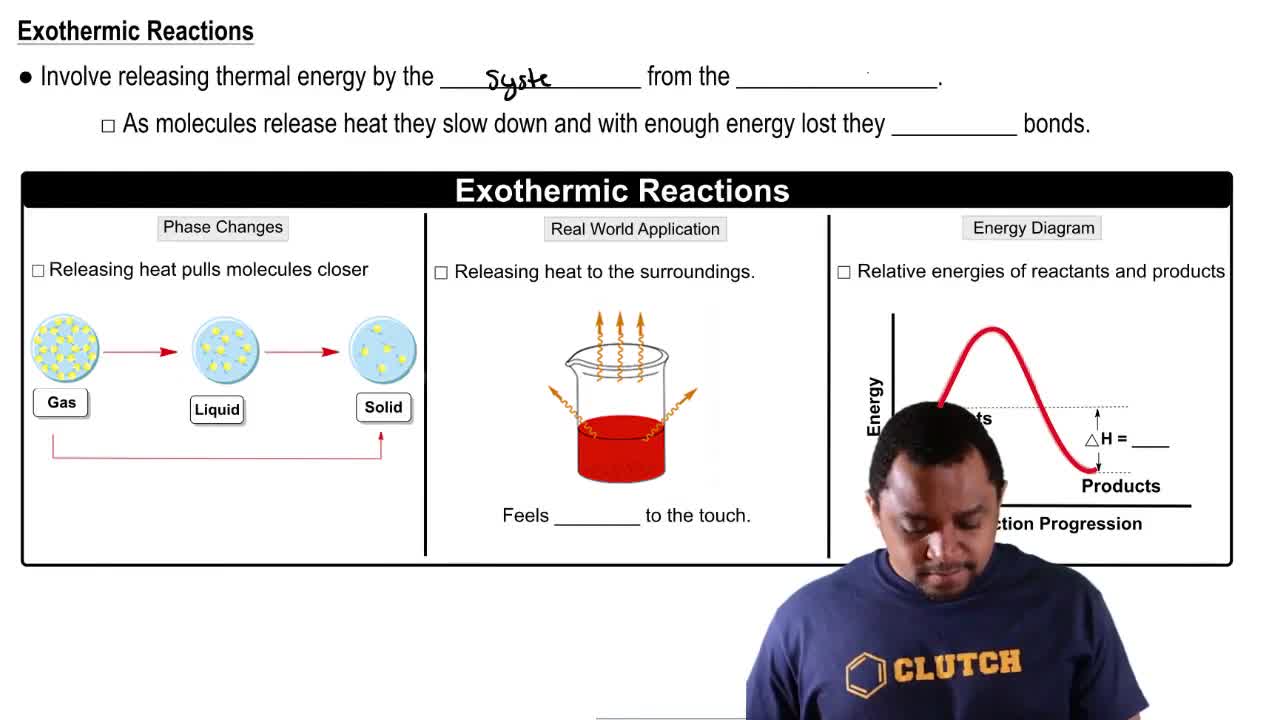Here are the essential concepts you must grasp in order to answer the question correctly.
Dissociation of Water
The dissociation of water refers to the process where water (H₂O) breaks down into hydronium (H₃O⁺) and hydroxide (OH⁻) ions. This equilibrium is influenced by temperature, as changes in temperature can shift the concentrations of these ions in solution. Understanding this process is crucial for analyzing how temperature affects the acidity and basicity of water.
Recommended video:
Acid and Base Strength Concept 1
Endothermic vs. Exothermic Reactions
Endothermic reactions absorb heat from their surroundings, leading to a decrease in temperature, while exothermic reactions release heat, resulting in an increase in temperature. The classification of a reaction as endothermic or exothermic can be determined by observing temperature changes during the reaction. This concept is essential for understanding the thermal dynamics of the dissociation of water.
Recommended video:
Endothermic & Exothermic Reactions
Temperature Dependence of Equilibrium
The temperature dependence of equilibrium states that the position of equilibrium in a chemical reaction can shift with changes in temperature, as described by Le Chatelier's principle. For the dissociation of water, an increase in temperature typically favors the formation of products (H₃O⁺ and OH⁻), indicating that the reaction is endothermic. This principle helps in predicting how temperature variations affect the dissociation process.
Recommended video:
The Equilibrium Constant Concept 1
 Verified step by step guidance
Verified step by step guidance Verified video answer for a similar problem:
Verified video answer for a similar problem:



 2:22m
2:22m